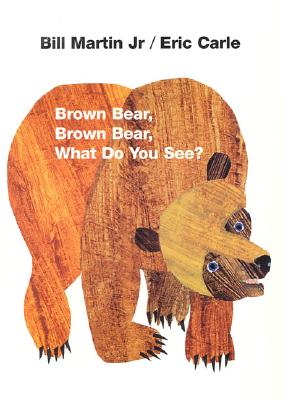Ever since I started this blog almost a year ago (our first anniversary is rapidly approaching), I’ve toyed with the idea of writing a post along the lines of “The Ten Essential Children’s Books You MUST Have in Your Home Library.” It’s the kind of article that’s easy to write, it attracts traffic, and it can be a great discussion starter, if done right. (If done wrong, it can be trite, repetitive, and disposable.) However, every time the idea occurs to me, I find myself paralyzed when it comes to trying to define the criteria for the list. What makes a book essential? Will my definition of “essential” correlate to other parents’ definitions? How can I say that these ten books have more inherent value than every other book ever published? I’ve just never been able to tackle the topic in a way that makes me comfortable.
But, with all that said, I will say that, if your kid doesn’t have their own copy of Brown Bear, Brown Bear, What Do You See? by Bill Martin Jr. and Eric Carle, there is something truly significant missing from your home library.
Is Brown Bear, Brown Bear, What Do You See? an “essential” children’s book? To me and my subjective definition of “essential”, yes, it is. Why? There are a lot of reasons, but if I had to pick one, it would probably be this – it is a magical picture book to read aloud to a young child.
For younger readers (and I’m talking mostly about kids ranging from newborn to around three years old), it seems like most of the books targeted at their age group fall into one of FOUR main categories.
First, there are STORY books. These are books that – surprise, surprise – tell a story. They have a beginning, middle, and end. They follow the arc of a character from point A to point B. Maybe they have a message or moral to convey. Most books fall into this category – fairy tales, legends, Red Riding Hood, Madeline, Strega Nona, etc.
Second, there are (what I call) STIMULUS-RESPONSE books. These are books that are less structured around a story and are more structured around eliciting some kind of response or feedback from your kid. Pat the Bunny is an example – it’s a book that wants you to (wait for it) pat the bunny. Mo Willems’ Don’t Let the Pigeon Drive the Bus is another example. That picture book isn’t setting up a big character transformation or narrative adventure for the Pigeon. Rather, it wants its readers to yell out “NO!” and to answer the Pigeon when he begs to be allowed to drive the bus. These are books designed to encourage interaction. (Press Here is another great stimulus-response book.) [read the rest of the post…]
{ 2 comments }
